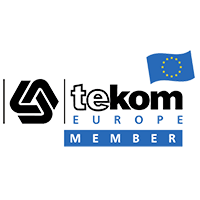Life as a Multimedia Localization Project Manager
Our most recent “Life as a…” segment sees us drop in on Multimedia Localization Project Manager Joanna Król.
What does your typical day look like?
Joanna Król: Because we work flexible office hours, I go to the kitchen to get a coffee and then switch on the computer at home. I then check my overnight emails, and try to wrap up anything urgent before getting into the office.
I avoid rush-hour, and arrive at the office at around 10am. I say “hi” to my colleagues around the office before going to my desk.
How did you come to specialize in Multimedia Localization?
JK: I was a Project Manager for Argos for many years before I was assigned a big new client that needed Multimedia localization.
This client is a multi-billion dollar Swiss pharma company that creates e-learning courses for its managers and sales people internationally. The computer-based trainings cover lots of soft-skills like sales techniques, team management and motivational skills. The CBT’s are in Articulate’s Storyline course development format.
Now I know the fundamentals of multimedia I have become person people come to with multimedia needs, although really I am still learning all the time.
What are the big challenges in your job?
JK: Because multimedia is a growing area, there are always new tools which I need to learn about. Even though I understand the basics, I need to adjust processes so that my projects are successful.
For example, the first couple of big multimedia projects I managed involved a lot of learning through trial and error. Audio recording is very time consuming, and tends to be the longest step in the process.
While for the first jobs I had all text extracted, and then sent everything to translation, I now have the scripts extracted first so that they can be translated, and recording scheduled while the remaining content is being translated. This means that we make use of the critical path on the project and don’t encounter delays.
There are technical challenges, too: English is nearly always the shortest language, while some other languages can be much longer. This means that the post-production teams can have problems to synchronize lip movements. There are techniques which can be used to help – for instance, we can slow video down, but this has its limits, before it becomes noticeable.
Finally, we send clients voice samples so that they can choose their preferred voices for each language. Once chosen, availability becomes a challenge. We always need some heads-up so that we can make sure that the chosen voice talent is available. While we can schedule around vacations and other work that they have in progress, we can’t schedule around illness. If a voice talent gets a cold, and the client does not have a back-up voice they would be pleased to use, there are not many options available except waiting for the voice to recover.
What sort of decisions do you help clients with?
JK: I try to help clients understand the options available to them, and to define the optimum multimedia strategy for their contents. Balancing cost with quality considerations, and making sure that they get value for their money.
There are basically 3 approaches: Dubbing, Voice-over or Subtitling.
Subtitling means leaving the English voice track in the end product, and simply overlaying translated subtitles.
This is the easiest and least expensive option.
Voice-over is where the audience hears the English track in the background, but the English fades when the translated audio kicks in.
Dubbing is when voice and video needs to be synchronized either by scene, or in some cases lip synching. This is a lot more expensive, but then the quality of the end product is much higher as a result.
There are differences in costs, and I advise clients on which option is best for them. The chosen route often depends on what is perceived as normal in the target countries. For example, in Poland, we are used to seeing films with subtitles, and voice-overs on TV. In other countries, like Spain, people are more used to dubbing in films and TV.
Beyond the options, we need to try to avoid rework as much as possible. Studio time is expensive!
In order to avoid rework, clients need to validate translated contents so that the scripts are completely final before we go to the recording phase. We also build glossaries from client-validated work so that future projects become easier.
We need to understand what the client’s technical requirements are for deliverables – file formats, naming conventions and bit rates etc. Clients are not often technical experts in this area, and there is often some back and forth at the beginning of a project to fix problems found in the source. The tools used for multimedia are not normally simple to use. They are not like Microsoft Office! We have even found differences between how things appear on different machines. Clients rely on us as technical experts to solve these problems.
What do you most enjoy about your job?
JK: I never get bored! There are always unexpected things happening. I both love and hate the problem solving, although ultimately solving problems is satisfying and rewarding. Each day I feel I make a difference.
I love to work with my colleagues at the Krakow office. I get to meet many people with great skills.
Which skills do you think are indispensable for a MM localization Project manager?
JK: Multi-tasking: You need to be comfortable doing 10 things at a time, while being prepared for unexpected changes in the process. You have to be organized, and you need to appreciate the critical paths between steps.
You also need to be patient and stay communicative – clear communication with both clients and studios helps projects to stay on track.
Finally, attention to detail – Making sure that quality processes are followed means that that studio time is maximized.
What advice would you give to businesses who want to begin with multimedia translation?
JK: Clearly understand the differences between the options available. Agree on expectations. If dubbing is not necessary for a region, go for VO or Subtitling. Discuss the options with your language service provider early on – they will be happy to help.
Take some time to understand the process. Make the right decisions at the beginning. Decide how creative we can be with a translation- can we adapt it so that it is shorter? Of course, this means not following the source precisely, but can make the end product better.
Can you give any examples of an interesting project you have been involved with?
JK: Every job is interesting, but I guess the bigger ones are the ones where I learn the most. Sometimes it feels like there is a surprise for me at every step!
I rely on the team here at Argos for many of the technical steps. My colleague Dominik from DTP helps with those projects in Storyline format. Dominik creates the files for translation, and carries out the final sign-offs so that our language teams are not the last people to look at the files. He has helped me a lot to understand the process, which has helped me to set clear expectations for the teams I work with. It is a great feeling to know that I am learning how to create movies!
Have a look at further blog posts from our “Life as…” series:
Argos Multilingual – we provide a full range of language translation services that cover all our clients’ needs. Contact Us Today and find out how we can help you with your next translation project!




